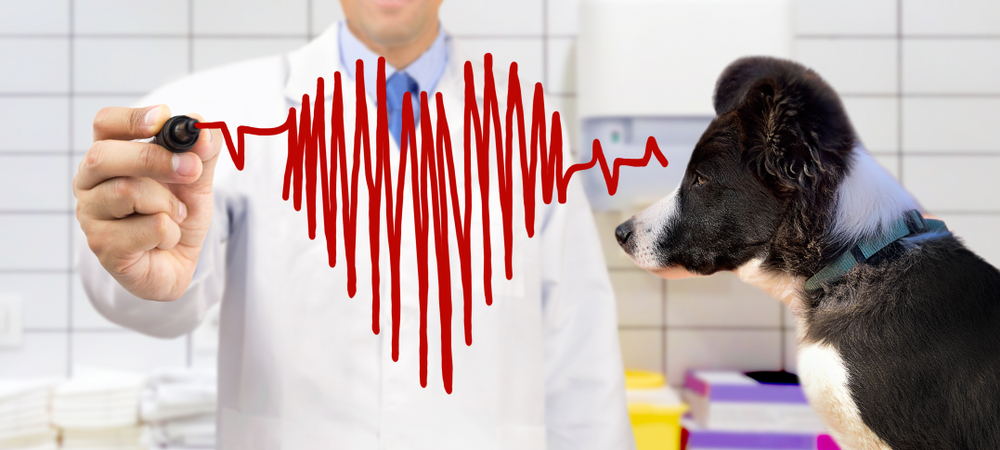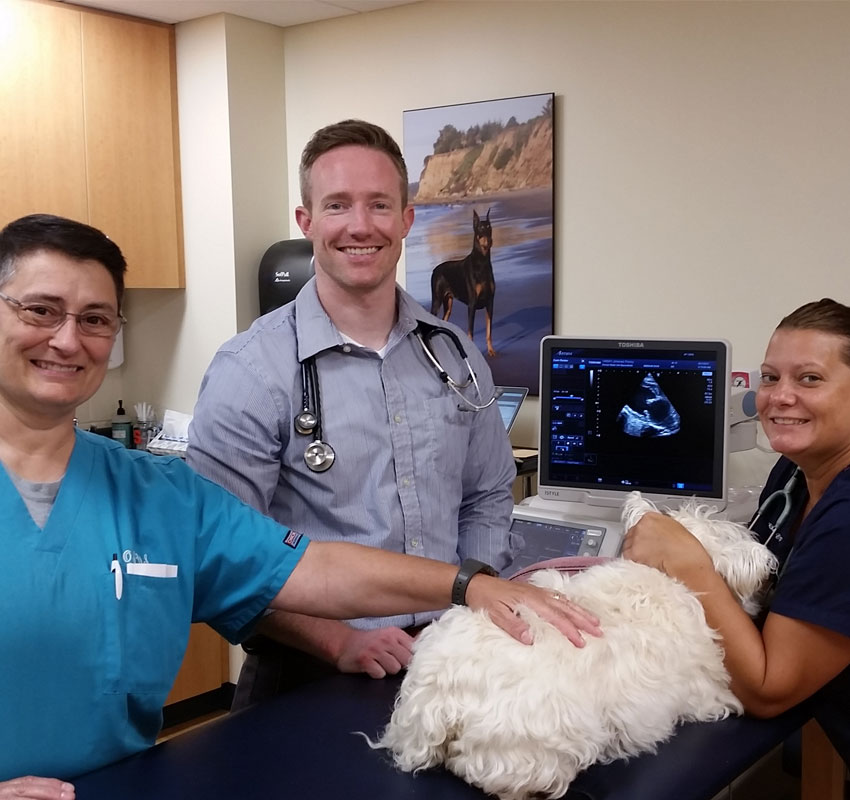Why More Vets Recommend CT Scans For Dogs During Diagnostic Evaluations}
The Function of Ultrasound and CT Scan in Modern Veterinary Practices: Insights From Experienced Professionals
In modern-day vet methods, ultrasound and CT scans greatly boost diagnostic capabilities. These imaging strategies give vital insights into animal wellness, guiding treatment decisions. Experienced experts identify the unique benefits of each modality. Ultrasound offers real-time evaluations, while CT checks provide complex physiological information. Understanding their roles and applications elevates crucial concerns about their effect on client end results and the future of veterinary diagnostics. What understandings can be obtained from their integrated use?
Comprehending Ultrasound in Veterinary Medicine
Ultrasound is an important diagnostic tool in vet medicine, supplying a non-invasive technique to picture inner structures. This imaging technique uses high-frequency acoustic waves to develop real-time photos of organs and tissues, permitting veterinarians to evaluate problems without medical intervention. Typical applications consist of evaluating the heart, liver, kidneys, and reproductive organs, as well as monitoring pregnancies.The treatment is fairly fast and can be performed in different setups, making it an available option for vets. Unlike radiography, ultrasound supplies in-depth information regarding soft tissues and blood flow, which is crucial for accurate diagnoses.Veterinary professionals depend on ultrasound to spot irregularities such as lumps, cysts, and fluid accumulation. Its ability to lead biopsies and other treatments further enhances its utility in professional practice. By offering a risk-free and reliable way to examine interior makeup, ultrasound has become a cornerstone of contemporary vet diagnostics.
The Advantages of CT Checks for Animal Diagnostics
CT scans deal considerable benefits in vet diagnostics by giving improved accuracy in recognizing internal conditions (CT Scans For Dogs). As a non-invasive imaging method, they ensure the safety and comfort of pets during evaluations. In enhancement, CT checks promote a complete assessment of interior frameworks, enabling for more effective therapy planning
Improved Diagnostic Accuracy
Advancements in imaging innovation have considerably enhanced analysis accuracy in veterinary medication, specifically through the use of CT scans. These scans offer thorough cross-sectional photos of a pet's inner frameworks, enabling vets to determine irregularities with precision. The high resolution and three-dimensional capacities of CT imaging help with the detection of problems such as lumps, fractures, and inner blood loss that could be missed out on with standard imaging methods. In addition, CT scans can aid in pre-surgical preparation by supplying a thorough view of physiological connections. This degree of detail not just enhances the precision of diagnoses yet also aids in customizing efficient treatment strategies. Consequently, the combination of CT modern technology into vet techniques is changing the landscape of pet medical care, boosting outcomes for people.
Non-Invasive Imaging Technique
The intro of non-invasive imaging techniques has actually revolutionized animal diagnostics, with CT checks becoming a noticeable tool in vet techniques. These scans provide high-resolution, cross-sectional photos of a pet's interior structures, permitting vets to assess complex problems without the requirement for invasive treatments. The advantages of CT scans include their capability to find growths, fractures, and inner bleeding with amazing precision. Additionally, they help with the evaluation of soft cells and organs, boosting diagnostic capabilities. The rate of CT scanning enables quick decision-making, which is important in emergency situation situations. By decreasing stress and anxiety and pain for the animal, CT scans add to a much more humane technique to diagnostics, ultimately improving therapy outcomes and advancing vet treatment.
Comprehensive Internal Assessment
An extensive internal assessment is vital for accurate medical diagnosis and reliable treatment in vet medicine. CT scans deal significant advantages hereof, supplying comprehensive cross-sectional pictures of an animal's inner structures. This innovative imaging method improves visualization of complex anatomical regions, making it possible for vets to identify problems such as tumors, fractures, and interior blood loss with better accuracy. In enhancement, CT scans facilitate the evaluation of conditions that might be challenging to identify via typical techniques. The speed and accuracy of CT imaging also add to prompt treatments, improving individual outcomes. As vet practices progressively include CT technology, the benefits of comprehensive interior assessments end up being noticeable, enhancing the significance of this tool in modern vet diagnostics.
Contrasting Ultrasound and CT Imaging Techniques
While both ultrasound and CT imaging serve necessary duties in vet diagnostics, each strategy supplies distinct advantages and restrictions that can influence scientific decision-making. Ultrasound is especially valued for its real-time imaging abilities, enabling veterinarians to observe dynamic physical processes. This strategy is non-invasive, mobile, and does not entail ionizing radiation, making it a much safer choice for both clinicians and animals. Ultrasound might have limitations in imagining specific physiological structures or deep tissues.Conversely, CT imaging supplies comprehensive cross-sectional views of the body, enabling for specific localization of problems. It masters evaluating complicated organs and frameworks, especially in the thorax and abdominal area. CT scans call for sedation or anesthetic in lots of situations and involve direct exposure to ionizing radiation. Eventually, the choice between ultrasound and CT depends upon the details medical circumstance, the location of interest, and the necessity of the diagnostic needs.
Case Researches: Successful Medical Diagnoses With Imaging
Study highlight the significant improvements in analysis accuracy accomplished via sophisticated imaging technologies like ultrasound and CT scans in vet methods. These innovations not just improve the detection of numerous problems yet likewise assist in prompt and reliable treatment plans. Analyzing particular cases can highlight the transformative impact of these imaging techniques on vet medicine.
Diagnostic Precision Improvements

Imaging Innovation Advancements
As vet imaging modern technology remains to progress, its impact on diagnostic abilities comes to be progressively obvious. Current situation research studies highlight the successful application of advanced ultrasound and CT check strategies in recognizing intricate conditions. As an example, a veterinary clinic made use of high-resolution CT scans to detect an unusual type of lung cancer in a canine, which traditional imaging had actually missed. Similarly, an ultrasound assessment exposed a stomach mass in a cat, motivating prompt surgical intervention and a favorable result. These developments not just boost analysis accuracy yet additionally allow vets to devise targeted treatment strategies. By leveraging sophisticated imaging innovations, vet specialists are significantly improving client treatment, causing extra efficient management of numerous health and wellness problems in animals.
The Duty of Imaging in Emergency Situation Veterinary Care
Imaging plays a necessary role in emergency veterinary treatment, offering vets with crucial information required to make quick, educated decisions. In urgent circumstances, strategies like ultrasound and CT scans make it possible for specialists to quickly assess a pet's interior structures, determining essential conditions such as internal bleeding, cracks, or body organ irregularities. These imaging methods permit for real-time assessments, helping with timely interventions that can be life-saving. As an example, ultrasound is very useful for assessing soft tissue injuries and conditions like fluid accumulation, while CT scans offer comprehensive pictures of complex physiological frameworks, vital for identifying trauma instances. The rate and accuracy of these imaging methods enhance the veterinarian's capacity to develop effective therapy plans, making sure the very best feasible results for their patients. The assimilation of advanced imaging innovations into emergency veterinary techniques is not only useful however significantly essential, as it improves diagnostic abilities and enhances total animal treatment throughout essential moments.

Training and Experience in Veterinary Imaging
Sophisticated imaging methods such as ultrasound and CT scans are necessary for efficient vet treatment, the successful implementation of these modern technologies greatly depends on the training and know-how of veterinary specialists. Proficient usage of imaging devices requires comprehensive understanding of makeup, pathology, and the principles underlying each method. Vet experts should go through customized training to accurately analyze imaging results, which is important for identifying problems and planning treatment.Certifications and continuing education and learning in veterinary imaging boost the abilities of practitioners, enabling them to stay upgraded with technical developments. Collaboration in between radiologists and vets commonly causes improved diagnostic accuracy, as experts can offer insights right into intricate situations. Additionally, useful experience in handling imaging equipment fosters self-confidence in its application. Inevitably, the high quality of veterinary imaging services is directly associated to the level of training and expertise possessed by the specialists making use of these crucial analysis devices.
Future Trends in Diagnostic Imaging for Animals
With the quick innovations in modern technology, vet diagnostic imaging is poised for significant advancement in the coming years. Emerging patterns indicate a change in the direction of even more portable and accessible imaging techniques, such as handheld ultrasound devices, which could improve area diagnostics. Additionally, the integration of expert system is anticipated to reinvent picture evaluation, permitting quicker and much more exact analyses of results.Moreover, developments in 3D imaging methods and calculated tomography will offer veterinarians with even more thorough sights of pet anatomy, leading to enhanced treatment plans. Virtual truth technology might also play a function in surgical planning and education and learning, giving vets an unique point of view on intricate cases.As telemedicine remains to expand, remote consultations helped with by analysis imaging will become a lot more typical, permitting experts to assist family doctors in real-time. Overall, read the article these trends are readied Board Certified Veterinary Cardiologist to improve the performance and effectiveness of veterinary treatment, ultimately enhancing animal results.
Often Asked Concerns
Just How Much Do Ultrasound and CT Checks Expense in Veterinary Clinics?
The prices of ultrasound and CT scans in vet facilities normally range from $300 to $1,500, depending upon factors such as area, center type, and specific procedures needed for the animal's diagnosis and treatment.

Exist Any Risks Related To Ultrasound and CT Scans for Pet Dogs?
Ultrasound and CT scans generally pose very little dangers to pet dogs. Nonetheless, possible worries consist of sedation reactions and direct exposure to anesthetics. Cancer Veterinary Near Me. Vets carefully assess each case to reduce any threats connected with these diagnostic treatments
Exactly How Lengthy Do Ultrasound and CT Treatments Generally Take?
Ultrasound treatments generally take about 30 minutes to an hour, relying on the complexity. CT scans, being more detailed, usually require half an hour to 90 minutes, consisting of prep work and recovery time for the family pet.
Can All Veterinarians Perform Ultrasounds and CT Scans?
Not all veterinarians can do ultrasounds and CT scans. Specialized training and qualification are commonly called for to guarantee competency in these advanced imaging methods, which might restrict their schedule to vets with extra qualifications and resources.
What Kinds of Animals Profit The Majority Of From These Imaging Techniques?
Particular animal species, particularly pet dogs and cats, benefit considerably from ultrasound and CT scans. These imaging techniques boost analysis accuracy for conditions like growths, inner injuries, and organ abnormalities, leading to enhanced treatment results and individual treatment. The high resolution and three-dimensional abilities of CT imaging facilitate the detection of problems such as lumps, fractures, and inner bleeding that could be missed out on with traditional imaging techniques. Situation research studies highlight the significant renovations in analysis precision achieved through advanced imaging technologies like ultrasound and CT scans in vet methods. Improving diagnostic accuracy in vet methods has actually been significantly helped by developments in imaging technologies such as ultrasound and CT scans. Innovative imaging strategies such as ultrasound and CT scans are essential for efficient veterinary care, the successful application of these technologies heavily depends on the training and proficiency of vet experts. Vet specialists should go through specific training to accurately analyze imaging results, which is important for detecting problems and intending treatment.Certifications and proceeding education and learning in veterinary imaging enhance the abilities of experts, enabling them to stay upgraded with technological developments.